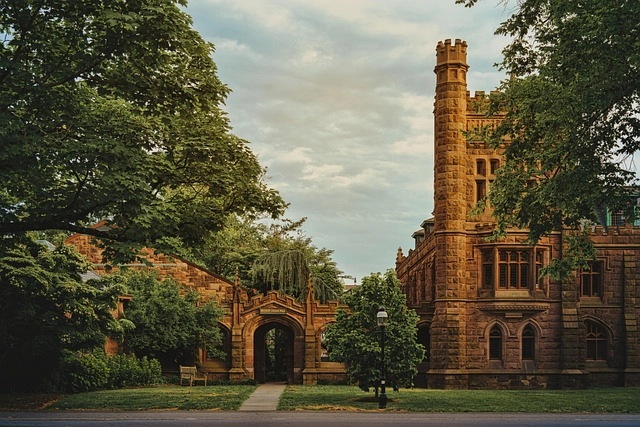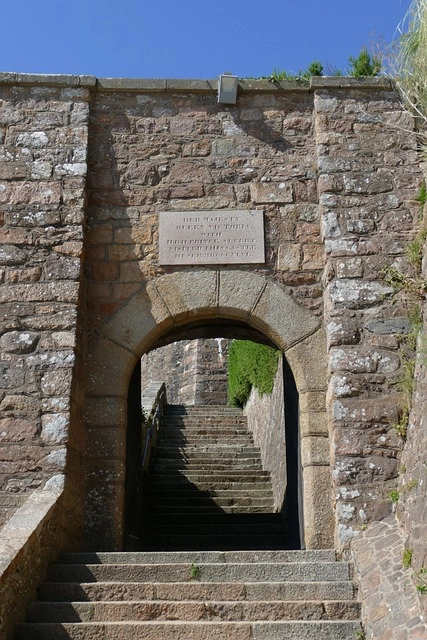New Jersey's Delaware Water Gap National Recreation Area is a haven for outdoor enthusiasts, featuring 70,000 acres of diverse landscapes ideal for hiking, camping, and water activities. The area's rich biodiversity and historical significance attract visitors seeking to explore its natural beauty and cultural heritage, making it a must-visit destination in New Jersey.
Discover New Jersey’s hidden gem, the Delaware Water Gap National Recreation Area, where breathtaking landscapes and rich history intertwine. From hiking trails weaving through lush forests to the majestic gap that gives it its name, this 70,000-acre haven offers a gateway to adventure. Explore cultural significance rooted in Native American traditions and colonial history, all while basking in the natural splendor that makes New Jersey an outdoor enthusiast’s paradise.
- Exploring New Jersey's Natural Wonders: A Gateway to Adventure
- Delaware Water Gap: Hiking Trails and Scenic Beauty
- Cultural Significance and Historical Insights of the Recreation Area
Exploring New Jersey's Natural Wonders: A Gateway to Adventure

New Jersey is a state brimming with breathtaking natural wonders, and the Delaware Water Gap National Recreation Area stands as a gateway to some of its most captivating landscapes. This vast outdoor playground stretches across 70,000 acres, offering a diverse range of recreational activities for nature enthusiasts and adventure seekers alike. Visitors can embark on thrilling hikes through lush forests, where ancient trees tower above and whispering streams provide a soothing soundtrack. The area boasts majestic waterfalls, their waters cascading down rock faces, creating a symphony of natural beauty that leaves everyone in awe.
For those seeking a challenge, the rugged terrain presents opportunities for backpacking and camping, allowing them to immerse themselves in the wilderness. The Delaware River, which runs through the gap, offers a serene backdrop for kayaking, canoeing, and fishing, inviting folks to explore its meandering currents and discover hidden coves. Moreover, the area’s rich biodiversity supports a thriving ecosystem, making it a haven for birdwatching and nature photography enthusiasts who come to capture the region’s indelible beauty.
Delaware Water Gap: Hiking Trails and Scenic Beauty

The Delaware Water Gap National Recreation Area in New Jersey offers a stunning landscape for outdoor enthusiasts, especially hikers. With miles of scenic trails winding through lush forests and along rugged ridges, it’s a paradise for those seeking to immerse themselves in nature. One of the most popular trails is the Appalachian Trail, which traverses the entire length of the gap, providing breathtaking views of the surrounding mountains and the sparkling Delaware River below.
For a more moderate hike, the East Coast Greenway also passes through this recreation area, offering easier trails that meander through picturesque valleys and over scenic overlooks. The diverse terrain caters to hikers of all skill levels, ensuring everyone can enjoy the natural beauty that makes this New Jersey gem so special.
Cultural Significance and Historical Insights of the Recreation Area

The Delaware Water Gap National Recreation Area in New Jersey is more than just a picturesque landscape; it holds profound cultural and historical significance. This vast expanse of natural beauty has been shaped by thousands of years of human activity, serving as a crossroads for diverse indigenous tribes before European colonization. The area’s rich heritage includes evidence of early Native American settlements, such as ancient artifacts and rock carvings, offering insights into the region’s vibrant past.
As European settlers arrived, the Delaware Water Gap became a strategic point along trade routes, playing a crucial role in the development of nearby communities. The historic trails that crisscrossed this land facilitated the exchange of goods and ideas, leaving behind a legacy of cultural interactions. Today, visitors can explore these historical paths, immerse themselves in the area’s diverse cultural tapestry, and gain a deeper understanding of New Jersey’s multifaceted history.
